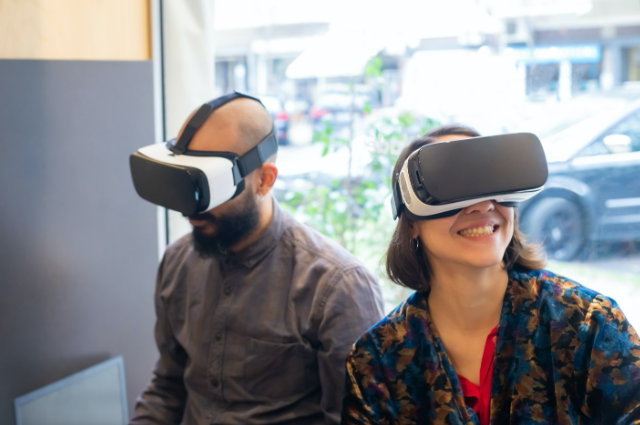Introduction
The evolution of reading in the AI era is reshaping the way we engage with written content. In the past, we were immersed in the realm of books, newspapers, and magazines. However, the digital revolution has steered us towards a screen-centric reading experience, as we now find ourselves increasingly absorbed in the realms of laptops, tablets, and smartphones.

Photo by Ola Dapo / pexels
This profound shift to digital reading has numerous implications for our reading habits. Foremost, it facilitates a swift consumption of information. With the ability to scan text on a screen, we can effortlessly traverse written content at an accelerated pace, enabling us to ingest copious amounts of information in a fraction of the time.
Nonetheless, this newfound expediency may also give rise to a concerning consequence – the propensity for shallower reading. When we peruse text rapidly, we run the risk of overlooking crucial details. Subtleties within the text may elude us, resulting in a diminished comprehension compared to the immersive experience offered by unhurried, contemplative reading.
Emerging Reading Methodologies
The advent of digital reading has spurred the development of novel reading methodologies, offering alternative approaches to engage with textual content:
- Reading Apps for Enhanced Velocity: To cater to the demand for swifter reading, a profusion of applications has emerged, promising to augment our reading speed. These innovative tools employ various techniques, such as dynamic highlighting of keywords and phrases, to enhance our focus and concentration.
- Skim and Scan Model: In the era of digital reading, the "skim and scan" model has gained traction. This approach involves a rapid perusal of the text to glean key information swiftly, without delving into the intricacies of the content. It allows for the identification of vital details, accommodating time-constrained individuals seeking expedited comprehension.
- Deep Reading Model: Conversely, the "deep reading" model champions a methodical and attentive engagement with the text. This approach emphasizes a comprehensive understanding of the content, encouraging the exploration of ideas and themes at a profound level. Through deliberate and measured reading, individuals can unravel the nuances and intricacies inherent within the written word.
The Influence of AI on Reading
The advent of AI technology has catalyzed significant advancements in the field of reading, revolutionizing the way we interact with written material:
1. AI-Powered Reading Assistants:
These technological marvels have emerged as invaluable companions on our reading journeys. Equipped with the ability to highlight pivotal words and phrases, provide concise text summaries, and even respond to queries, AI-powered reading assistants elevate our reading efficiency and effectiveness. For instance, the renowned Amazon's Alexa boasts the capability to read aloud a diverse array of literary works, ranging from books and articles to even emails.
2. Augmented Reality Reading:
Augmented reality (AR) has emerged as a transformative force in the reading landscape. This cutting-edge technology seamlessly overlays digital information onto physical books, offering readers supplementary context and insights. Pioneering applications like Bard enable readers to immerse themselves in a captivating augmented reality experience, replete with annotations encompassing word definitions, chapter summaries, and interactive quizzes.

Photo by Kampus Production / pexels
3. Flipped Classrooms:
The realm of education has been significantly impacted by the integration of AI technology into reading practices. Flipped classrooms exemplify a novel pedagogical approach, wherein students are encouraged to engage with online lectures prior to classroom sessions. This novel paradigm allows students to assimilate knowledge at their own pace, dedicating classroom time to fruitful discussions and collaborative projects. Prominent online learning platforms like Coursera offer a diverse array of flipped classroom courses, including subjects like "Introduction to Artificial Intelligence" and "Machine Learning."
4. Massive Open Online Courses (MOOCs):
MOOCs have emerged as a game-changer in the realm of education, facilitating access to free online courses from esteemed universities worldwide. These platforms provide an unparalleled opportunity for individuals to acquire new skills or refresh their existing knowledge base. EdX, a prominent MOOC provider, offers a myriad of engaging courses related to reading and writing, including "How to Read a Book" and "The Art of Writing."
The Hybrid Future of Reading
The future of reading in the AI era is characterized by the potential synergy of traditional and digital reading experiences. Rather than perceiving these two approaches as mutually exclusive, the future of reading holds promise in seamlessly integrating the benefits of both realms:
This envisioned hybrid approach would allow individuals to relish the timeless pleasure of curling up with a good book while simultaneously enjoying the conveniences afforded by digital screens. By leveraging the power of technology, readers can access a vast trove of information instantaneously, all the while preserving the enchantment of the written word.
Conclusion
As we stand on the precipice of the AI era, the future of reading beckons with possibilities. The rapid digitization of content presents opportunities for expedient consumption and efficiency, yet we must remain cautious of the potential drawbacks that accompany swift reading. Nonetheless, the emergence of novel reading methodologies and the integration of AI technology in the reading landscape usher in a new era of engagement, promoting both efficiency and depth.
The hybrid future of reading, amalgamating the best of traditional and digital approaches, seeks to preserve the intrinsic joy and appreciation for literature while harnessing the potential of technology. As technology continues to evolve, we can anticipate a tapestry of innovative reading experiences that will enrich our lives and propel us into a realm where the beauty of the written word coexists harmoniously with the marvels of the digital age.
